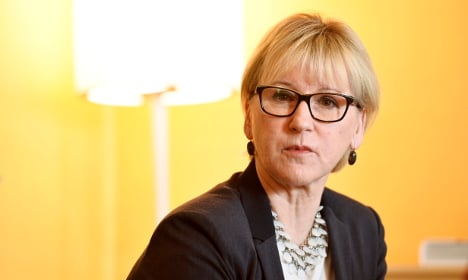The future of the EU is uncertain. This is apparent both from the referendum in the UK and the inability of EU member states to deal with the refugee crisis. But it would be wrong to talk about a divided Europe. Thanks to the EU, Europe is united. This has fostered peace, prosperity and solidarity between the 28 Member States. We must talk about a united Europe.
In times of crisis it is also important to remember the EU’s success stories. The EU is the world’s largest donor of aid, the world’s largest integrated economy and accounts for nearly a third of global trade. The EU’s consensus on sanctions against Russia, the EU’s role in the negotiations with Iran, and the EU’s commitment ahead of COP21 are good examples of successful joint action. Through cooperation at the EU level, we are taking joint responsibility for climate and environment issues. No single country in Europe can meet the challenges of a globalised world alone.
Having said that, we must have a dialogue among the member states about our common values. The refugee crisis has weakened the bonds uniting the EU. One effect of this is that it has become more difficult to assert universal values in other parts of the world. We must talk about these issues in the EU, even if we start out from different positions. It is up to us national politicians to take responsibility and to dare to stand up for the common decisions made in Brussels. We – not ‘they’ – are the EU.
Time and again, EU enlargement has proved the most important instrument for peace, growth and prosperity in Europe. The eastern enlargement of the EU in 2004 brought more than 500 million people into the EU’s internal market. This has tangible advantages in everyday life. It means that we citizens can live, travel, study, work, seek care and retire in any EU country we wish. The common market helps to create jobs and gives us an increased supply of goods and services at better prices. Right now, roaming charges are being phased out thanks to persevering efforts at EU level.
Free movement and common regulatory frameworks have enabled Swedish companies to grow beyond national borders. Over two thirds of Sweden’s trade today is with countries in the internal market. The economic benefits of the internal market are one of several strong reasons why we hope that the people of the UK will vote to stay in the EU. It is to the UK’s and the EU’s advantage alike. Moreover, we want to carry on working with the UK to make the EU a stronger foreign policy actor.
One important element is to strengthen the EU’s social dimension. With almost 25 million people in the EU unemployed, workers’ rights are under severe pressure. Now that Europe’s economies are slowly recovering from the crisis years, social cohesion and welfare must also be strengthened. We are pleased that the Commission has put this issue on the agenda and has asserted the principle of equal pay for equal work. Sweden’s leading role in these issues is confirmed by the appointment of our former Minister for Finance, Allan Larsson, as President Juncker’s Special Adviser for the European Pillar of Social Rights.
In a social Europe, growth and social progress are mutually reinforcing. Fair conditions and high employment rates are key to sustainable economic development in Europe. If women participated in the labour market to the same extent as men, the EU’s GDP could increase by 12 per cent by 2030. The social summit planned in Sweden in 2017 will provide vital impetus in driving these issues forward.
The development of Swedish welfare is intimately bound up with European integration. On our own, Sweden cannot solve the challenges of our time. Sweden will take a central and proactive part, together with our EU partners, in tackling the challenges we face. We need a strong, unified and cohesive Union.
This is a translation of an article written by Margot Wallström, Sweden’s Foreign Minister, which was first published by Göteborgs Posten.




 Please whitelist us to continue reading.
Please whitelist us to continue reading.